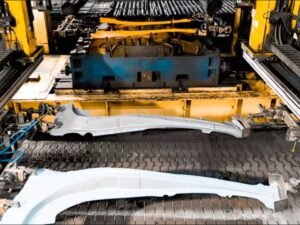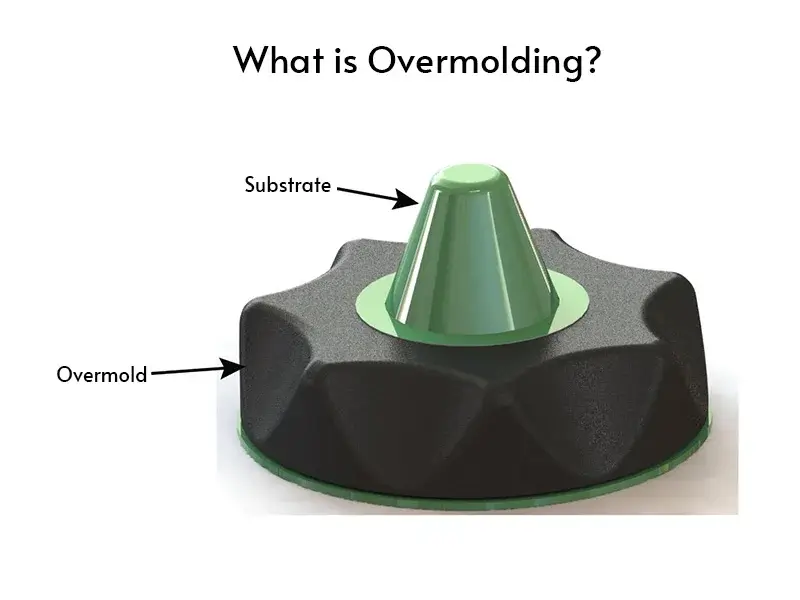In plastic manufacturing, thermoforming and injection molding services are two widely used methods for shaping thermoplastic materials. Injection molding forms parts by melting and molding plastic under pressure, while thermoforming shapes heated plastic sheets over molds. This article explores their key differences, including process, cost, advantages, and best-use scenarios.
Thermoforming vs Injection Molding Process Comparison
Both thermoforming and injection molding are plastic shaping techniques, but the processes differ significantly.
Injection Molding Process
Injection molding involves injecting molten plastic into a mold cavity under high pressure. The plastic is first heated until it becomes a liquid and then forced into a precisely designed mold, where it cools and hardens. The mold is typically made of metal, and the process is ideal for creating highly detailed and complex shapes. Injection molding is well-suited for high-volume production and is commonly used for producing small parts with tight tolerances, such as automotive components or medical devices.
Thermoforming Process
In thermoforming, a sheet of plastic is heated until it becomes soft and pliable. Once it reaches the desired temperature, the plastic sheet is stretched over a mold using either vacuum, pressure, or mechanical force to form the shape. Afterward, the material is cooled and removed from the mold, completing the process. Thermoforming is typically used for creating thin-walled products with larger, simpler shapes, such as packaging or trays.
Thermoforming vs Injection Mold
One of the major differences between thermoforming and injection molding is the complexity and cost of the molds used in each process.
Injection Molding Molds
Injection molding molds are far more intricate and require precise engineering. Typically made of hardened steel, these molds are built to withstand the pressures of high-volume production. The molds are also more expensive to create, with costs often running into thousands of dollars depending on the design’s complexity. However, once the mold is made, injection molding offers faster production times and consistent quality over large production runs.
Thermoforming Molds
Thermoforming molds are relatively simple in design compared to injection molds. They are often made of aluminum or other cost-effective materials and are less expensive to produce. Since the molding process does not require high-pressure forces, the mold can be created with fewer intricacies, making it a cost-effective option for low- to medium-volume production.
Thermoforming vs Injection Molding Material Selection
Both processes offer flexibility in terms of materials, but material formats differ.
Injection Molding Materials
Injection molding uses pellets of ABS, polycarbonate (PC), polypropylene (PP), high-density polyethylene (HDPE), and PVC. Pellets allow easy color compounding and additive integration for properties like flame retardancy or UV resistance.
Thermoforming Materials
Common materials for thermoforming include PETG, HIPS, ABS, polycarbonate (PC), and certain blends that maintain toughness after thinning during forming. Thermoforming often uses sheet stock in gauges from about 0.020 inch to 0.500 inch.
Production Efficiency and Speed
Efficiency depends on volume and part complexity.
Injection Molding Production Speed
In contrast, injection molding is faster when it comes to high-volume production. After the initial setup, the mold can produce a part in just a few seconds, and the automated nature of the process allows for continuous, high-efficiency production. Since the mold is designed to withstand high pressures, each cycle produces identical parts with high precision, making it ideal for mass production of small, intricate parts.
Thermoforming Production Speed
Thermoforming is a relatively quick process, particularly for large parts with simple designs. Once the mold is ready, the plastic sheet can be heated and formed in a matter of seconds. The process is particularly efficient for low- to medium-volume production runs, especially when there is a need for rapid prototyping or short lead times. However, the efficiency decreases as the complexity of the part increases, as more time and effort are required to heat and form the plastic sheet.
Thermoforming vs Injection Molding Cost Comparison
The cost comparison between thermoforming and injection molding largely depends on production volume, part complexity, and material choice.
Injection Molding Cost
Injection molding, while more expensive in terms of mold creation, becomes more cost-effective with high-volume production. The per-unit cost decreases significantly as the number of parts produced increases, making it ideal for mass production of small, detailed parts. The high precision of the process allows for minimal material waste, reducing overall injection molding costs in large batches.
Thermoforming Cost
In terms of upfront costs, thermoforming is generally more affordable. The molds are less expensive, and since the process is less complex, the overall production cost per unit is lower for low- to medium-volume runs. However, for large production runs of more complex parts, thermoforming can become less efficient, especially when precision and consistency are required.
Applications of Thermoforming vs Injection Molding
Each manufacturing process has its own set of applications where it excels.
Injection Molding Applications
Injection molding is ideal for parts that require high precision, small size, and complex features. Applications include:
- Automotive parts such as engine components.
- Medical devices such as syringes, valves.
- Electronics such as housings, connectors.
- Consumer products such as toys, kitchen gadgets.
Thermoforming Applications
Thermoforming is often used for products with simple shapes and larger dimensions. Common applications include:
- Food packaging and trays
- Medical packaging, such as blister packs.
- Consumer goods such as plastic containers.
- Automotive parts such as interior trim pieces.
How to Choose Between Thermoforming and Injection Molding?
Choosing between thermoforming and injection molding depends on several key factors.
Thermoforming is better for simpler, larger parts with lower precision requirements. It’s ideal for low- to medium-volume production because the mold costs are lower, and the process is faster to set up. Materials are typically thermoplastics like PVC and ABS, which can be easily formed into larger sheets or shapes. However, it is less suited for intricate or high-performance parts.
Injection molding, on the other hand, excels at producing detailed, high-precision parts with tight tolerances. This process is best for high-volume production since the mold setup is more expensive but becomes cost-effective as production scales. It offers a wider range of material options, including stronger and more durable plastics. While it has higher upfront costs, injection molding is more economical for large production runs where consistent quality and strength are required.
FAQ
Both processes shape heated plastic into defined forms using molds, then cool the material to retain its shape.
Thermoforming is better for low-volume production due to lower tooling costs and faster setup.
Thermoforming is faster for prototyping and low volumes (days vs. weeks for setup).







